Yoga: reclining bound angle pose
Reclining bound angle pose: Step 1
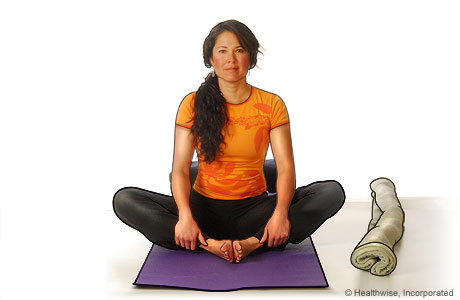
Caution: Do not do this exercise after giving birth until your doctor says it is okay. If you have knee, hip, or shoulder problems, don’t do this pose. If you feel any pain when you do this pose, stop. Talk to a yoga instructor about how to adjust the pose. Or ask him or her to teach you a different pose that doesn’t cause pain.
Sit on the floor with the soles of your feet pressed together. Your knees should be bent, and your feet should be as close to your body as is comfortable without straining.
Reclining bound angle pose: Step 2

If you plan to use props, place the yoga blocks under your knees or use a blanket (see step 3 for instructions on how to position the blanket). You want to support your knees at the level where they are comfortable when you recline. Use more than one pillow if needed. You do not want to strain to have your knees as close to the floor as possible.
Reclining bound angle pose: Step 3
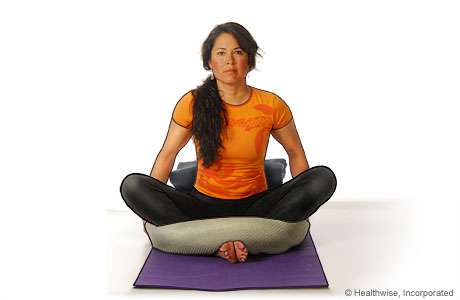
If you are using a blanket to support your knees, wrap it around you under your knees, as shown.
Reclining bound angle pose: Step 4
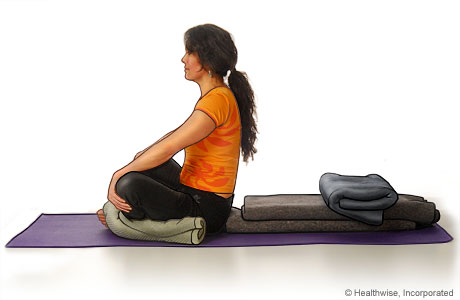
To support your back, take one or more stiff blankets and place them lengthwise under your back so that your torso and head will be supported when you lie down. Make sure that the blankets are wide enough to go under your shoulders as well. You may want to position the blankets so that they fit with the curve of your spine when you lie down, as shown. You can also use a blanket as a pillow to support your head, as shown.
Reclining bound angle pose: Step 5

You should be sitting just in front of the blankets so that when you lie back, your torso and head will be supported. You may have to test to see how many blankets to use.
Reclining bound angle pose: Step 6
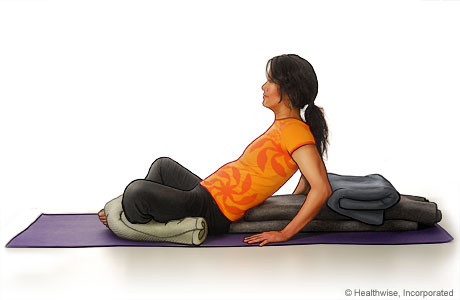
Gently lower yourself to the floor.
Reclining bound angle pose: Step 7
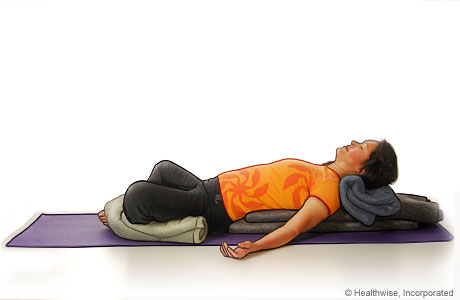
Put your arms out to your sides at about a 45-degree angle with your palms facing up. Close your eyes, and breathe normally. Relax.
At first, stay in the pose for up to 1 minute. Later you can stay in the pose for longer periods of time—up to 10 minutes.
Current as of: April 7, 2019
Author: Healthwise Staff
Medical Review:Patrice Burgess MD – Family Medicine & Kathleen Romito MD – Family Medicine & Adam Husney MD – Family Medicine & Christine R. Maldonado PhD – Behavioral Health
This information does not replace the advice of a doctor. Healthwise, Incorporated, disclaims any warranty or liability for your use of this information. Your use of this information means that you agree to the Terms of Use. Learn how we develop our content.

